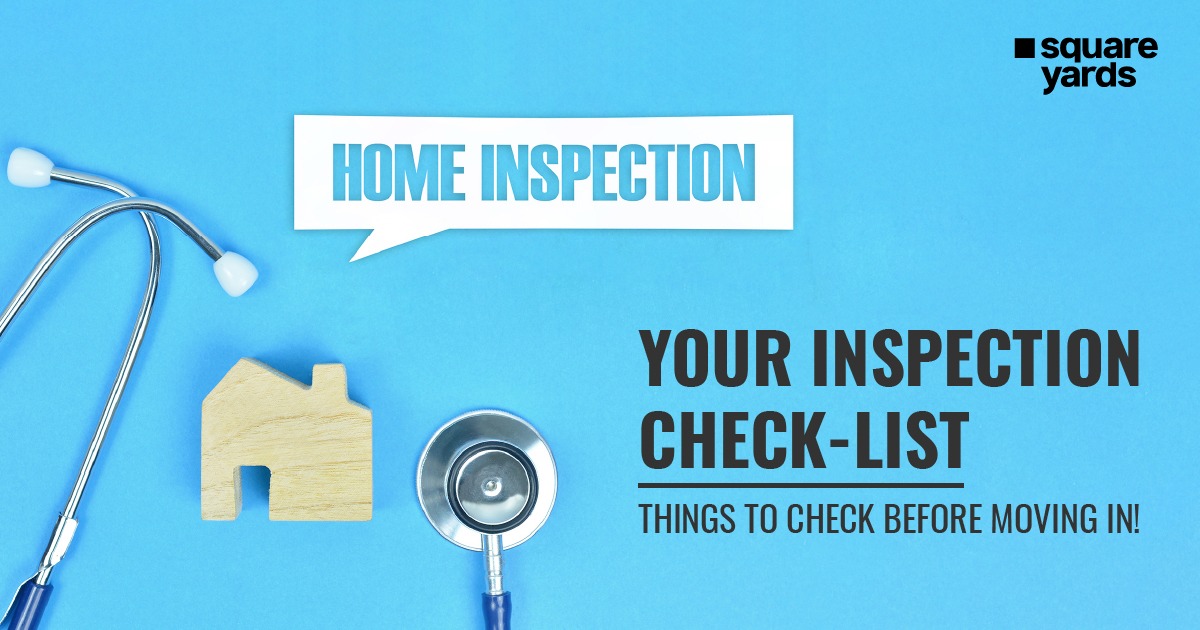Introduction
Moving into a new home is an exciting milestone in anyone’s life. However, before you start unpacking and settling in, it’s crucial to conduct a thorough inspection to ensure that everything is in order. This detailed walkthrough of the house will help you identify any existing issues or potential problems, allowing you to address them promptly and avoid future headaches. Today, we’ll guide you through a comprehensive go-to inspection checklist that covers all the essential areas of your new home. By following these steps, you can feel confident that your new abode is safe, secure, and ready for you to call it your own.
Exterior Inspection checklist :
Start your inspection from the outside of the property to assess its overall condition and identify any visible issues. Pay attention to the following areas:
a. Roof and Gutters: Check for any missing or damaged shingles, signs of leaks, and ensure gutters are clear.
b. Foundation: Look for cracks or signs of settlement around the foundation.
c. Windows and Doors: Inspect for any broken or poorly sealed windows and doors.
d. Siding or Paint: Check for peeling paint or damaged siding.
e. Landscaping: Assess the condition of the yard, trees, and any other outdoor structures.
Interior Inspection checklist :
Once you’ve examined the exterior, move inside and inspect each room individually. Pay close attention to the following areas:
a. Walls and Ceilings: Look for cracks, water stains, or signs of mold or mildew.
b. Flooring: Check for any damaged or uneven flooring.
c. Windows and Doors: Ensure they open and close smoothly, and examine their seals for any drafts.
d. Electrical Systems: Test all switches, outlets, and circuit breakers to ensure they are functioning properly.
e. Plumbing: Inspect faucets, toilets, and pipes for leaks or signs of water damage.
f. Heating, Ventilation, and Air Conditioning (HVAC): Turn on the HVAC system and verify that it’s working effectively.
g. Appliances: Test all appliances, including the stove, refrigerator, dishwasher, and laundry machines.
Safety Measures:
Your safety and the safety of your loved ones should be a top priority. Pay attention to the following safety measures:
a. Smoke and Carbon Monoxide Detectors: Check that they are present, properly installed, and functional.
b. Fire Extinguishers: Verify the presence of fire extinguishers and their expiration dates.
c. Emergency Exits: Identify the locations of emergency exits, especially in multi-story homes.
d. Security Systems: If your home has a security system, ensure it is in working order and understand how to operate it.
Utilities and Services: For all-round Inspection Checklist
Before settling in, make sure all necessary utilities and services are functional:
a. Electricity and Lighting: Test all light fixtures and switches throughout the house.
b. Water Supply: Run water in all sinks, showers, and toilets to ensure proper water pressure and drainage.
c. Heating and Cooling: Check if the heating and cooling systems are functioning efficiently.
d. Internet and Phone Connections: Verify the availability and quality of internet and phone services.
Miscellaneous Checks:
Don’t overlook these additional checks that can help you feel more comfortable in your new home:
a. Pest Control: Look for signs of pests such as droppings, gnaw marks, or nests.
b. Insulation: Assess the insulation in the attic and walls to ensure energy efficiency.
c. Storage Spaces: Examine closets and cabinets for any signs of damage or pests.
d. Odour and Ventilation: Ensure there are no persistent unpleasant odours and check that ventilation systems are working correctly.
Conclusion:
Identifying issues in your new home before they become significant problems is crucial. Taking the time to assess the exterior, interior, safety measures, utilities and services, and other important aspects will provide you with peace of mind and help you create a comfortable living environment. Remember, if you discover any concerns during the inspection, it’s best to address them promptly to ensure a safe and enjoyable home ownership experience. With this checklist in hand, you can confidently embark on this new chapter in your life and turn your house into a warm and welcoming home.
Are there any specific safety measures I should check?
Yes, it’s important to check smoke and carbon monoxide detectors to ensure they are present and functional. Verify the presence and expiration dates of fire extinguishers, identify emergency exits, and check the functionality of any security systems in place.
What utilities and services should I test?
You should test the electricity and lighting throughout the house, run water in all sinks and toilets to check water pressure and drainage, test the heating and cooling systems, and verify the availability and quality of internet and phone connections.
Should I be concerned about pests?
Yes, it’s important to look for signs of pests such as droppings, gnaw marks, or nests. If you notice any signs, it’s advisable to consult a professional pest control service to address the issue.
What should I do if I find any issues during the inspection?
If you discover any issues during the inspection, it’s best to address them promptly. Depending on the nature and severity of the problem, you may need to contact a professional contractor or service provider to assist with repairs or further evaluation.





